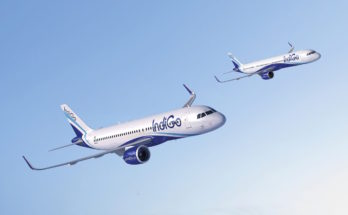by Ray Jaworowski, Senior Aerospace Analyst, Forecast International.
Forecast International projects that a total of 5,728 regional aircraft will be produced in the 15-year period from 2017 through 2031, including both regional jets and regional turboprop airliners. The value of this production is estimated at $212.9 billion, as calculated in constant 2017 U.S. dollars.
The regional aircraft market has stabilized in the past couple of years, with annual production relatively flat in 2015 and 2016 at slightly more than 340 units in each of those years. Our projections indicate that yearly output will remain within a range of 330-349 units through 2022 before sustained market growth takes hold. Production is expected to rise to an annual total of 425 aircraft by 2026, and remain at roughly that level through at least 2030.
Our market share projections indicate that Embraer, ATR, Bombardier, and Mitsubishi will lead the regional aircraft market in terms of unit production during the 2017-2031 forecast timeframe. Embraer is projected to build 1,430 regional jetliners during the period, while ATR is forecast to build 1,175 regional turboprops. Bombardier, which produces both jets and turboprops, is expected to produce 836 regional aircraft. Mitsubishi is expected to build 677 regional jets.
The long-term growth projected for the market will be driven by the entry into service and production ramp-ups of such new, large-capacity jetliners as the Embraer E2 family and the Mitsubishi MRJ series. The turboprop segment, populated by ATR and Bombardier models as well as a handful of others, is also expected to have strong long-term growth.
Not all is entirely sunny, however, as a number of issues confront the regional aircraft industry in the years ahead. Perhaps foremost among these is the continuing existence of scope clauses in pilot contracts at major U.S. airlines. At the three U.S. legacy carriers, these clauses prohibit regional airline partners from operating aircraft that exceed a seating capacity of 76 seats and a maximum takeoff weight of 86,000 pounds (with a minor “grandfathered” exception at American Airlines for a handful of existing 86-seat turboprops).
Many of the new jetliners currently in development or early production exceed both of these limits. And, while the seat restriction can be easily overcome with a less dense seating layout, the weight restriction can be a trickier problem to address. The overall impact of scope clause restrictions in the U.S. is to place an artificial ceiling on how big the market for larger-capacity regional jetliners can grow.
Pilot contracts at the three U.S. majors become amendable in the 2019-2020 timeframe, with this period thus representing the earliest opportunity for scope relaxation. However, there are few signs that scope clause liberalization will be in the cards during the next round of contract negotiations. Relief may have to wait until the following round, which would likely occur sometime in the 2021-2023 timeframe.
Fortunately for the industry, the potential market for large regional jetliners is not limited to scope-impacted regional airlines. It also includes regionals that are unaffected by scope restrictions. Other customers will be the major airlines themselves, as well as low-fare carriers and leasing companies. The diversity of the customer base will be critical to the market success of these aircraft.
Please feel free to use this content with Forecast International and analyst attributions, along with a link to the article. Contact Ray Peterson at +1 (203) 426-0800 or via email at ray.peterson@forecast1.com for additional analysis.
The Forecast International Civil Aircraft service covers all facets of the fixed-wing commercial and private aviation industry. It includes more than 70 detailed reports, complete with production forecasts on individual civil aircraft families. Four Market Segment Analyses provide in-depth examination of the markets for Large Commercial Jet Transports, Regional Aircraft, Business Jets, and General Aviation/Utility Aircraft. Included in the reports are production forecasts, a Forecast Rationale detailing the basis for the forecast, the aircraft’s price range and technical specifications, a program history, and recent developments.
For 50 years, Forecast International intelligence reports have been the aerospace and defense industry standard for accurate research, analysis, and projections. Our experienced analysts compile, evaluate, and present accurate data for decision makers. FI's market research reports offer concise analysis of individual programs and identify market opportunities. Each report includes a program overview, detailed statistics, recent developments and a competitive analysis, culminating in production forecasts spanning 10 or 15 years. Let our market intelligence reports be a key part of reducing uncertainties and mastering your specific market and its growth potential. Find out more at www.forecastinternational.com




